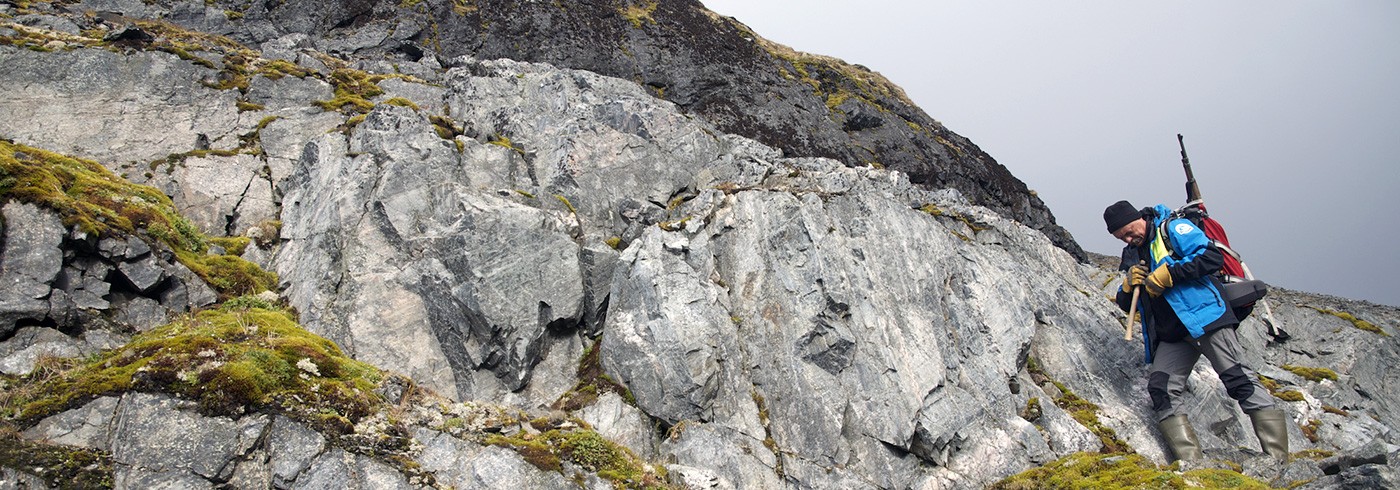Båthamna (boat-harbour) is a small (~ 100 m) northwards opening bay in the about 10 km wide southwards opening Sommerfeldtbukta. Obviously a perfectly sheltered place for a boat. We arrived at high tide and could reach the beach through shallow waters, but without problems.
When we went out of the tent this morning we couldn’t believe what we saw. The right name for this place would be a boat trap, but certainly not a harbor! Some pools of water left, else nothing but dry sand with all the rocks which we by a stroke of luck didn’t hit on our way in. But that’s what we have a Zodiac for – only we coordinate our departure with the tidal table everything will be alright. And it stinks from the slowly decaying algae matts and sea grass on the beach, the wind blowing in our direction.
But otherwise this place is again an absolute beauty – the third time on this trip after Grimaldibukta and Selvågen. The rock pillars around us – Trollstabbane, the high (about 950 m) peak in the middle of the glaciers with the describing name of Haitanna (shark tooth), the low, from sea level almost indistinguishable flat islands around Sørkappøya, where only the white spray from the breaking swell is visible. And wind, wind and more wind.
We went on a first reconnaissance trip to the north along the eastern shore of Sommerfeldtbukta and then towards the east through Trollstabbane, curious what the rock units on the map are. And soon we understood why this area, although present on the geological map, was called unmapped by a colleague. We can’t find a relationship between the map and reality. But after some initial doubts the higher grade metamorphic rocks soon appeared to be similar to the Isbjørnhamna Group in the Hornsund area, garnet-mica schists interlayered with thin quartzites and a marble that looks like sugar. Tomorrow we will go farther to the east and see if these are all units present in this area or not. If yes, this means that we will not find much new in this area. But also this is important to confirm, and we know that the units from Hornsund continue to this southernmost part of the island. Enough for tonight, and tomorrow we expect more wind…
Henning Lorenz, Uppsala universitet










